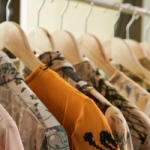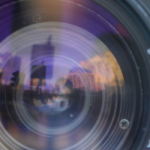Looking to elevate your photography game? In this blog, we’ll explore the essential photography equipment you can’t afford to overlook. From lenses to lighting gear, this comprehensive guide will ensure you’re equipped with the right tools. Discover a curated photography equipment list tailored to your needs.
In this blog, we’ll delve into specific gear for various photography niches. We will learn about wedding photography equipment, wildlife photography equipment, and the essential list of equipment needed for photography studio. Explore these specialized tools crucial for honing your craft and achieving remarkable shots and learn about the photography equipment list. Go through AAFT online photography course to get a detailed understanding about photography.
Table of content
Equipment for Product Photography
Equipment for Wildlife Photography
Equipment for Wedding Photography
Equipment for Nature Photography
Equipment for Jewelry Photography
List of Equipment Needed for Photography Studio
How to Protect the Photography Equipment
Equipment for Product Photography
When venturing into product photography, a well-curated photography equipment list becomes pivotal in achieving stellar results. This roster typically includes essential components: a dependable camera boasting manual settings for precise control, a versatile lens collection covering macros for intricate details, robust tripods ensuring stability, an array of lighting sources like softboxes or continuous lights for optimal illumination, and an assortment of backdrops to craft seamless backgrounds, collectively shaping the cornerstone for exceptional product imagery.
Pros:
- Precision and Detail: Specialized lenses and lighting allow for intricate and detailed product shots, showcasing texture and finer features.
- Versatility: With the right equipment, you can shoot a wide range of products, from small items like jewelry to larger products like furniture.
Cons:
- Cost: High-quality photography equipment can be an investment, especially for specialized lenses and lighting setups.
- Learning Curve: Mastering the use of various equipment and lighting techniques might require time and practice.
Equipment for Wildlife Photography
When delving into product photography, the right equipment can significantly impact the quality of your images. Essential gear includes a reliable camera with manual settings, a selection of lenses (such as a macro lens for detailed shots), a sturdy tripod for stability, lighting sources (like softboxes or continuous lights), and backdrops to create a seamless background.
Pros:
- Precision and Detail: Specialized lenses and lighting allow for intricate and detailed product shots, showcasing texture and finer features.
- Versatility: With the right equipment, you can shoot a wide range of products, from small items like jewelry to larger products like furniture.
Cons:
- Cost: High-quality photography equipment can be an investment, especially for specialized lenses and lighting setups.
- Learning Curve: Mastering the use of various equipment and lighting techniques might require time and practice.
Equipment for Wedding Photography
Wildlife photography demands specialized gear to capture elusive moments in nature. Key equipment includes a high-quality telephoto lens, preferably with a long focal length for zooming in on distant subjects. A sturdy tripod or monopod aids in stabilizing shots, especially when using heavy lenses. Additionally, a camera with fast autofocus capabilities is crucial for capturing swift wildlife movements.
Pros:
- Reach and Detail: A powerful telephoto lens allows for capturing distant subjects with remarkable detail, essential for wildlife photography.
- Versatility: Quality wildlife gear enables capturing various wildlife scenes, from portraits to action shots, offering a diverse range of images.
Cons:
- Weight and Mobility: Telephoto lenses and associated gear can be heavy and bulky, making them challenging to carry over long distances.
- Cost: High-quality telephoto lenses and professional camera bodies can be expensive, posing a significant investment.
Equipment for Nature Photography
Nature photography demands gear that can adapt to varying landscapes and lighting conditions. A versatile camera body with a range of manual settings is essential. Opt for a selection of lenses, including wide-angle for landscapes and macro for detailed close-ups of flora and fauna. A sturdy tripod aids in capturing steady shots, especially for long exposures and low-light situations. Additionally, polarizing filters can enhance colors and reduce glare in outdoor settings.
Pros:
- Versatility: A variety of lenses and accessories allow for capturing the intricate details of nature, from vast landscapes to close-up shots of wildlife and plants.
- Creativity: Diverse equipment offers the flexibility to experiment with different perspectives and compositions, fostering creativity in nature photography.
Cons:
- Weight and Mobility: Carrying multiple lenses and a tripod can be cumbersome, impacting mobility during outdoor shoots.
- Weather Considerations: Protecting sensitive gear from harsh weather conditions, like rain or extreme temperatures, can pose challenges in nature photography.
Equipment for Jewelry Photography
Jewelry photography necessitates specialized gear to capture the intricate details and sparkle of accessories. Essential equipment includes a sturdy tripod to ensure stability and reduce vibrations. A macro lens allows for close-up shots, highlighting the intricate details of jewelry pieces. Additionally, lighting is crucial; using diffused light sources such as softboxes or light tents minimizes harsh reflections and shadows on reflective surfaces.
Pros:
- Detail and Precision: Macro lenses excel in capturing intricate details, textures, and the brilliance of gemstones or metals, crucial in jewelry photography.
- Controlled Lighting: Diffused lighting sources ensure even illumination, reducing unwanted reflections and enhancing the jewelry’s appearance.
Cons:
- Time and Precision: Achieving the desired composition and focus in jewelry photography demands patience and precision.
- Equipment Investment: Specialized lenses and lighting gear tailored for jewelry photography can be an initial investment.
List of Equipment Needed for Photography Studio
Setting up a photography studio demands various tools and gear to create a conducive environment for capturing stunning images. Essential equipment includes:
- Camera and Lenses: High-quality camera bodies and a selection of lenses covering various focal lengths are fundamental.
- Lighting Equipment: Softboxes, umbrellas, or studio strobes provide controlled lighting for different shooting conditions.
- Backdrop System: Backdrops in various colors and textures offer versatility in creating different moods and settings.
- Tripods and Light Stands: Sturdy tripods and light stands ensure stability for cameras and lighting gear.
- Reflectors and Diffusers: Reflectors bounce and manipulate light, while diffusers soften harsh lighting, enhancing image quality.
- Props and Accessories: Props add depth and context to images, while accessories like remote triggers aid in controlling the camera remotely.
Pros:
- Creative Control: Having a studio allows for complete control over lighting and sets, enabling precise and creative photography.
- Consistency: With a designated space, photographers can achieve consistent results in their work.
Cons:
- Space and Cost: Setting up and maintaining a studio space can be space-consuming and involve initial costs.
- Technical Knowledge: Operating studio equipment effectively requires technical know-how and practice.
How to Protect the Photography Equipment?
Protecting photography equipment is crucial for ensuring its longevity and optimal performance. Here are some tips:
- Invest in Cases and Bags: Use padded cases and bags specifically designed for cameras, lenses, and other equipment to shield them from impacts and scratches while traveling or in storage.
- Use Lens Filters: UV or clear filters can safeguard lenses from scratches, dust, and moisture without affecting image quality. For outdoor shooting, consider using a protective filter.
- Store in a Controlled Environment: Keep equipment in a dry, cool place to prevent damage from humidity, extreme temperatures, or direct sunlight. Use dehumidifiers if necessary.
- Regular Cleaning: Dust, dirt, and moisture can harm equipment. Clean lenses, camera bodies, and accessories with appropriate cleaning tools and solutions to maintain their condition.
- Lens Caps and Camera Covers: Always use lens caps when lenses are not in use to shield them from dust and accidental damage. Use camera covers or rain sleeves when shooting in adverse weather conditions.
- Insurance and Warranties: Consider insuring expensive equipment against theft, loss, or damage. Also, maintain warranties and service contracts to facilitate repairs or replacements.
- Careful Handling: Handle equipment with care, especially delicate parts like lenses, mounts, and LCD screens. Avoid sudden impacts or drops.
- Regular Maintenance: Have your equipment professionally serviced and calibrated at regular intervals to ensure it’s in optimal working condition.
By following these practices, photographers can significantly prolong the lifespan of their photography equipment and maintain its quality for years to come.
Conclusion
In conclusion, safeguarding photography equipment is essential for its longevity and optimal performance. Utilize protective cases, lens filters, and controlled storage environments to shield gear from damage. Regular cleaning, careful handling, and insurance coverage further fortify against potential risks. Whether it’s maintaining a photography equipment list, preserving photography lighting equipment, or ensuring overall gear protection, these practices contribute to sustaining the quality and functionality of valuable photography assets.
Remember, proper care and maintenance not only extend the lifespan of your equipment but also preserve the integrity of your craft, ensuring consistent and high-quality results throughout your photography journey.


















